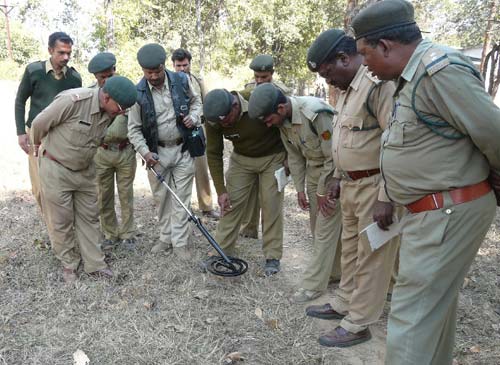Metal detectors uncover hidden traps
New Delhi, India, 19th March 2009—A TRAFFIC India programme in co-operation with the National Tiger Conservation Authority (NTCA) is using a novel method to locate snares set to catch Tigers and other animals.

“Metal snares are often used to catch Tigers and other big cats, but they are almost impossible to find because they are cleverly camouflaged,” said Samir Sinha, Director of TRAFFIC India.
“However, by using Deep Search Metal Detectors, forest guards can now find even the most cleverly hidden traps,” he explained.
Deep Search Metal Detectors are ideal for remote field operations because they are robust, simple to assemble and use, and do not require complicated maintenance or handling.
The detectors can also be used during post-mortem examinations to see if snared animals have bullet wounds. This helps strengthen legal follow up and should lead to more effective prosecutions for poaching.
TRAFFIC India is providing full training in the use of detectors and has developed a handy manual in English and Hindi to help field personnel.
“The feedback from trainees is very positive and they see many benefits from using the equipment,” said Sinha.
Senior officials are enthusiastic too, and several have contacted TRAFFIC to ask how they can obtain detectors.
“The use of metal detectors is likely to have a deterrent effect in the long run, simply as poachers become aware new technology is in place to stop their efforts,” said Sinha.
TRAFFIC India’s metal detector programme, which is generously funded by WWF-UK and WWF-Germany, has seen equipment sent to Tiger areas throughout India, including well-known reserves such as Corbett, Ranthambore, Kanha, Pench, Simlipal, Bandhavgarh and Rajaji.
A pair of detectors plus training in their use can cost up to INR80,000 (USD1,600) for each reserve but, according to Sinha, the cost of the new technology is a small price to pay for helping to protect India’s Tigers.




